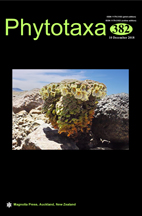Abstract
Eriogonum corymbosum vars. nilesii and aureum have been difficult to distinguish in the field due to their phenotypic similarities. Greater understanding of the ranges of these two varieties has been demonstrated by genetic analyses over the past decade. However, field identification remains problematic, and current dichotomous keys do not provide reliable traits, or trait combinations, to enable botanists to confidently distinguish these two taxa. We examined morphological characters among individuals from six populations of E. corymbosum (three of var. nilesii and three of var. aureum). We found significant differences between these two varieties in petiole length, leaf length, and the ratios of leaf-blade length to petiole length and leaf-blade width to petiole length. We also found qualitative differences in adaxial leaf color and inflorescence-stem pubescence. Petiole length was the significantly different trait with the least overlap between varieties, making it practical for distinguishing between E. corymbosum vars. nilesii and aureum in the field. Moreover, these six trait differences lend further support to genetic findings in previous studies that confirmed the existence of these two taxa and demonstrated their limited ranges and rarity.

